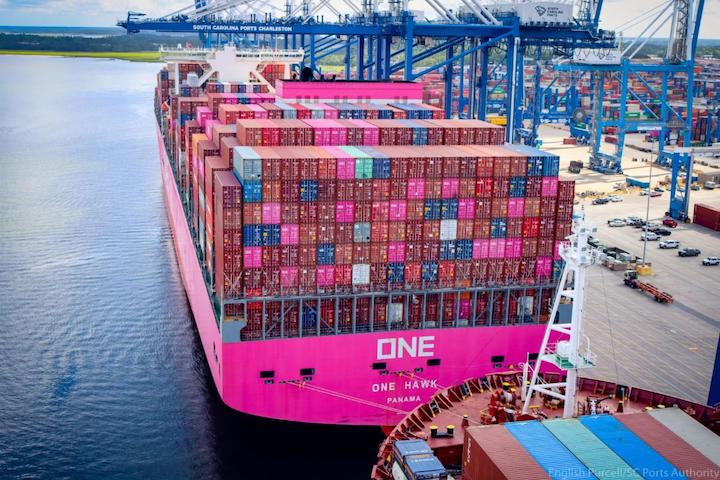South Carolina Ports had a strong start to fiscal year 2022 with its highest July on record for containers moving through the Port of Charleston.
SC Ports handled a record-setting 244,821 twenty-foot equivalent units (TEUs) in July at Wando Welch Terminal, North Charleston Terminal and Hugh K. Leatherman Terminal. This is up 38% from a year ago.

These impressive volumes mark the second highest all-time monthly record for containers handled at the Port of Charleston. Loaded imports also set an all-time record in July, with a 47% increase year-over-year, as retail continues to boom. Loaded exports were up 14%.
SC Ports handled 15,450 vehicles at Columbus Street Terminal in July, while Inland Port Greer and Inland Port Dillon handled a combined 13,976 rail moves.
“We begin our fiscal year 2022 with record container volumes, which comes on the heels of moving more containers than ever before in fiscal year 2021,” SC Ports President and CEO Jim Newsome said. “While import and export loaded containers are both growth segments, the widening disparity of imports over exports is continued evidence of the strength of the U.S. consumer. As the only port in the country with new terminal capacity, SC Ports has the ability to handle the growing cargo volumes and rising retail imports.”
SC Ports greatly increased capacity over the past year. Phase One of the Leatherman Terminal adds 700,000 TEUs of capacity and an additional berth to the booming East Coast port market. The state-of-the-art container terminal can handle a 20,000-TEU vessel.
Work is also ongoing to enhance Wando Welch Terminal, expand Inland Port Greer and develop near-dock rail close to Leatherman Terminal. These infrastructure projects work together to significantly strengthen the Southeast supply chain.
“Our strategic investments are proving beneficial as we handle unprecedented cargo volumes in support of our customers,” Newsome said. “As more major retailers move goods through the Port of Charleston, we are ready with efficient operations, thanks to our excellent maritime community.”











